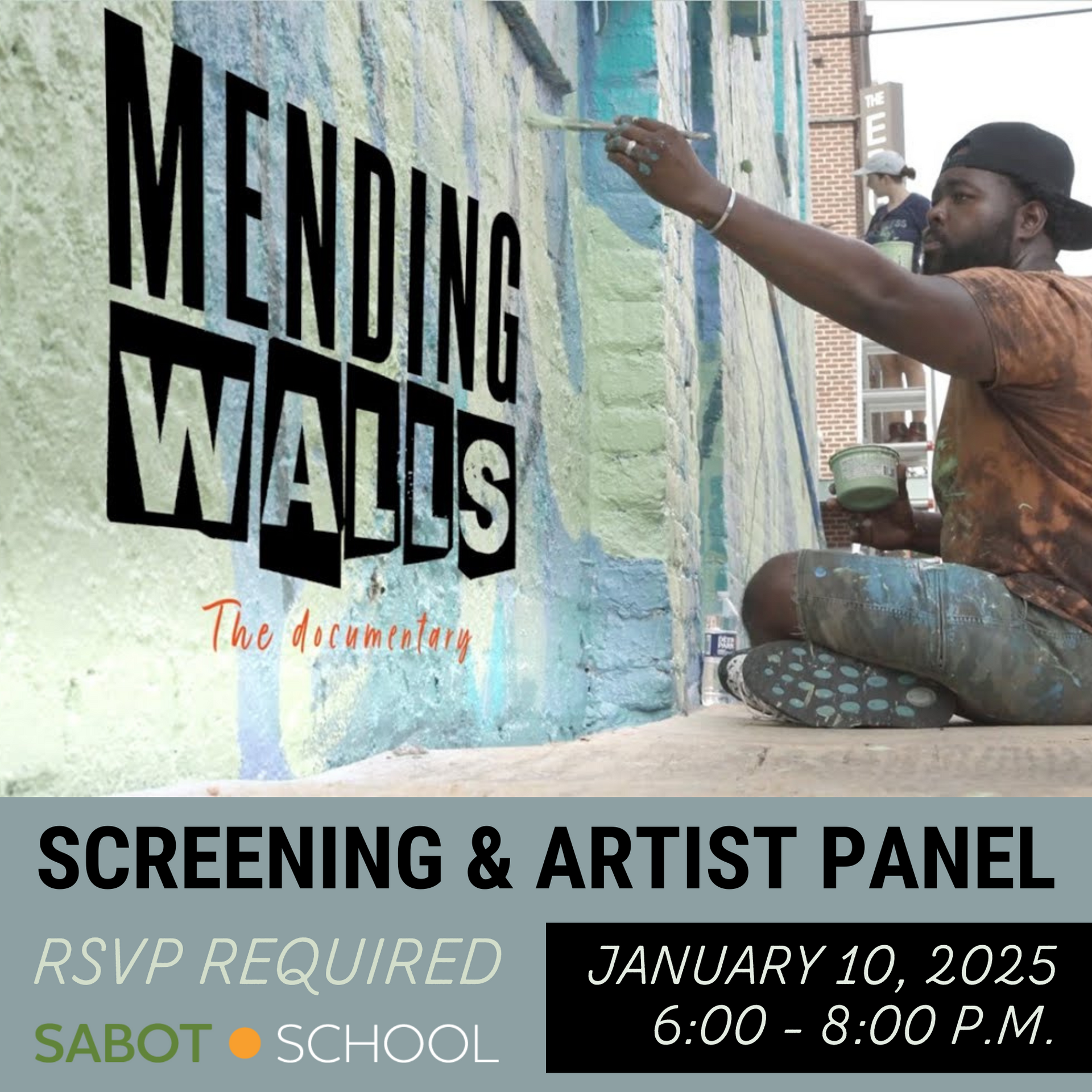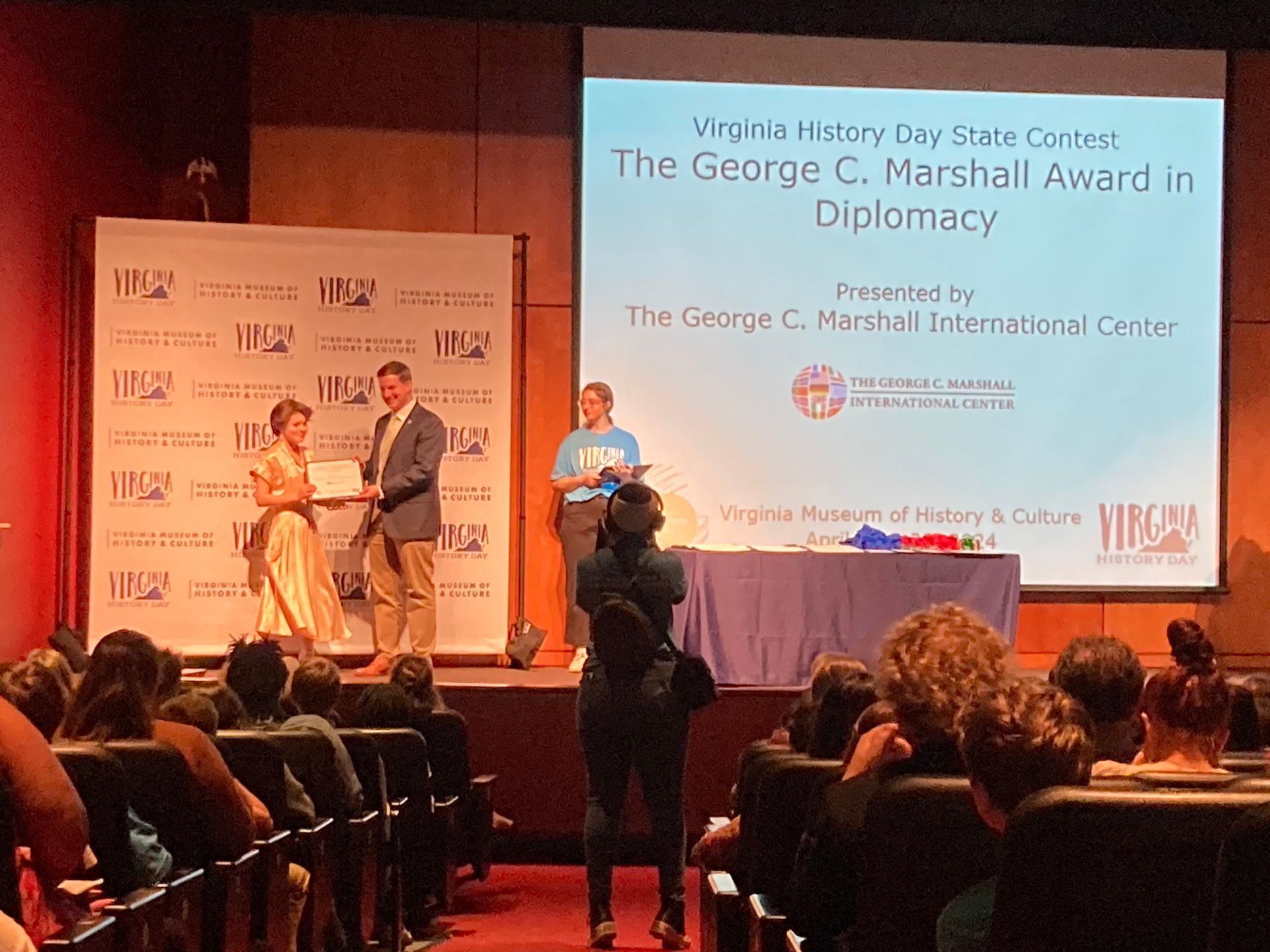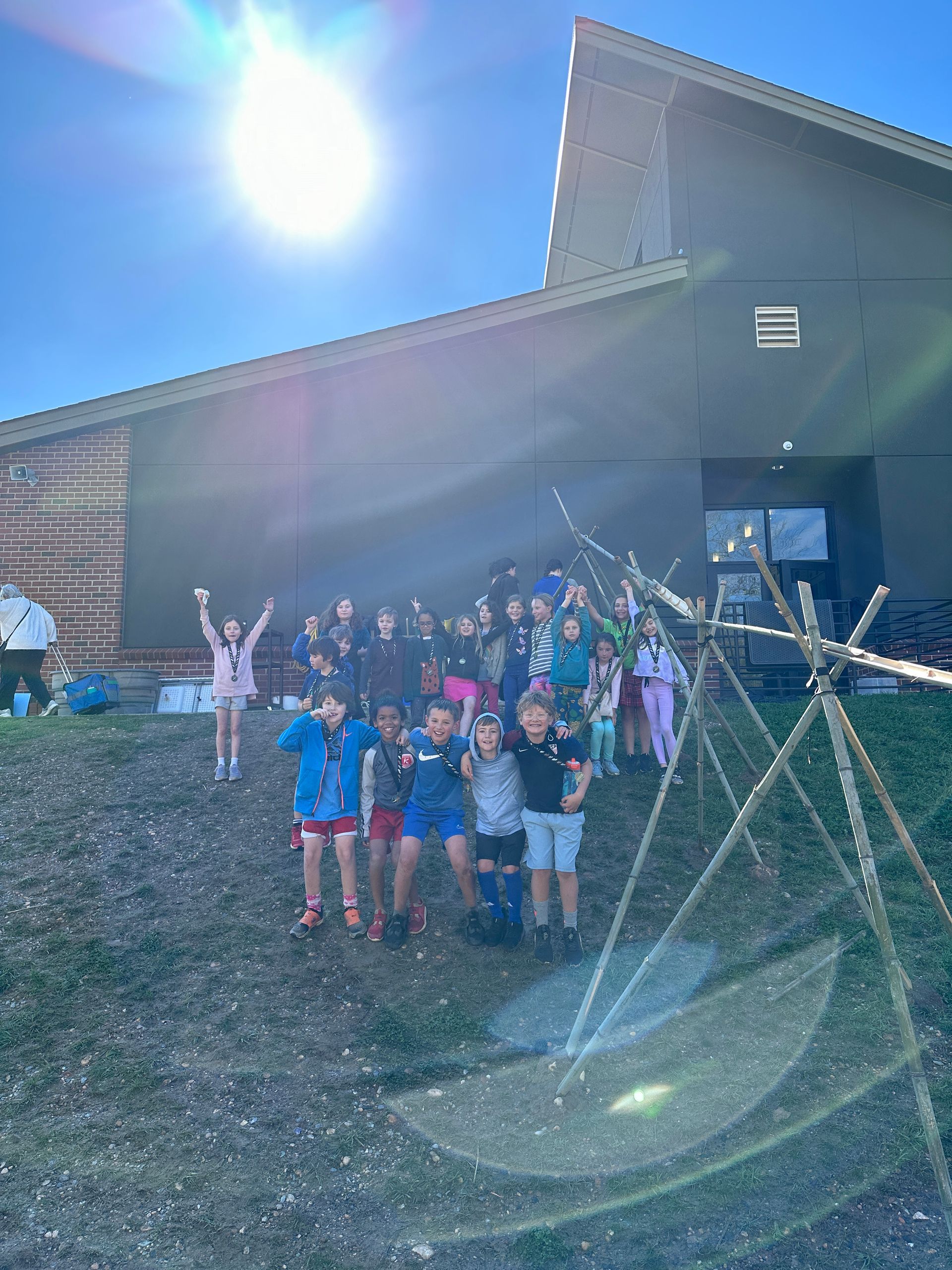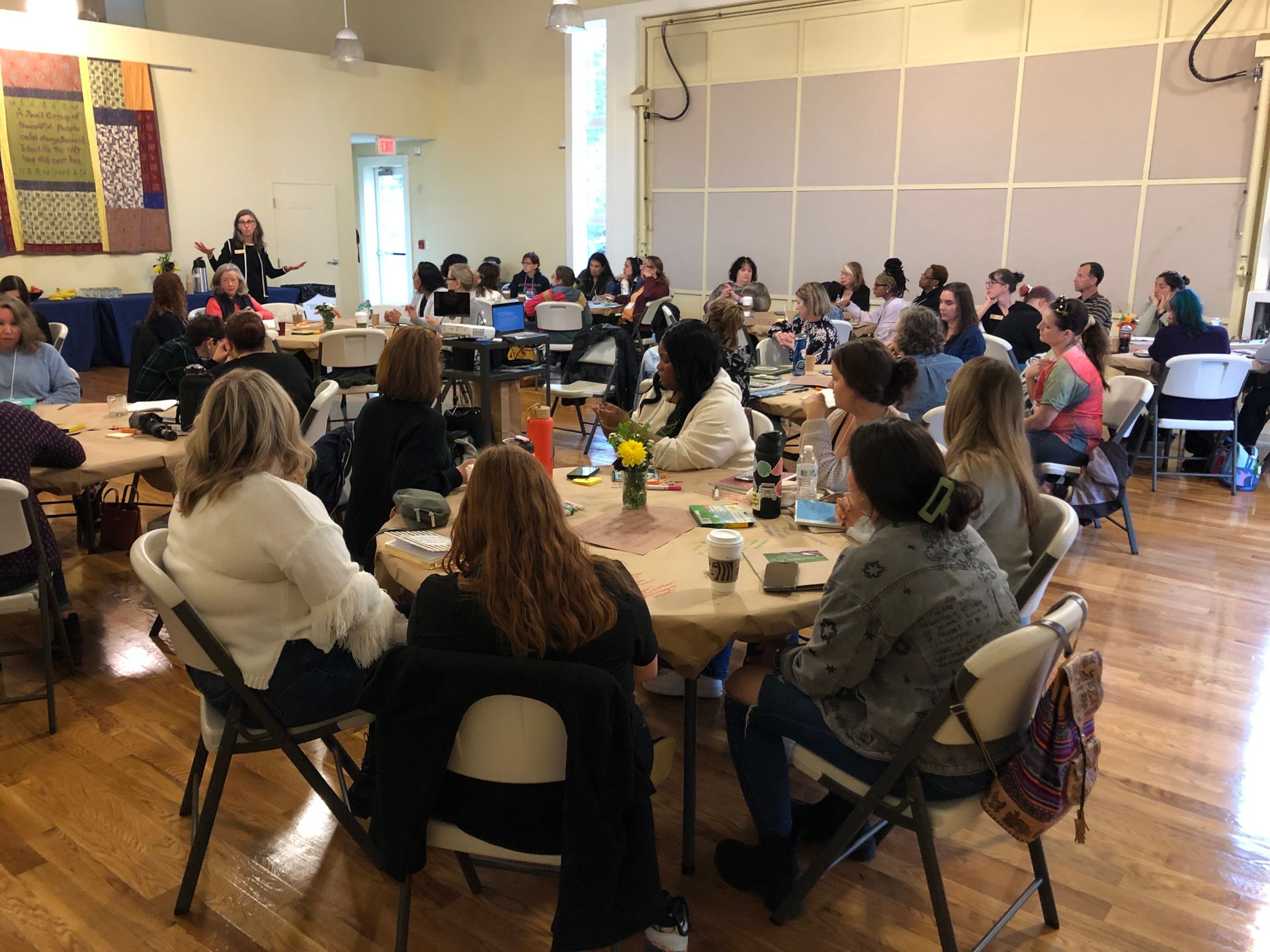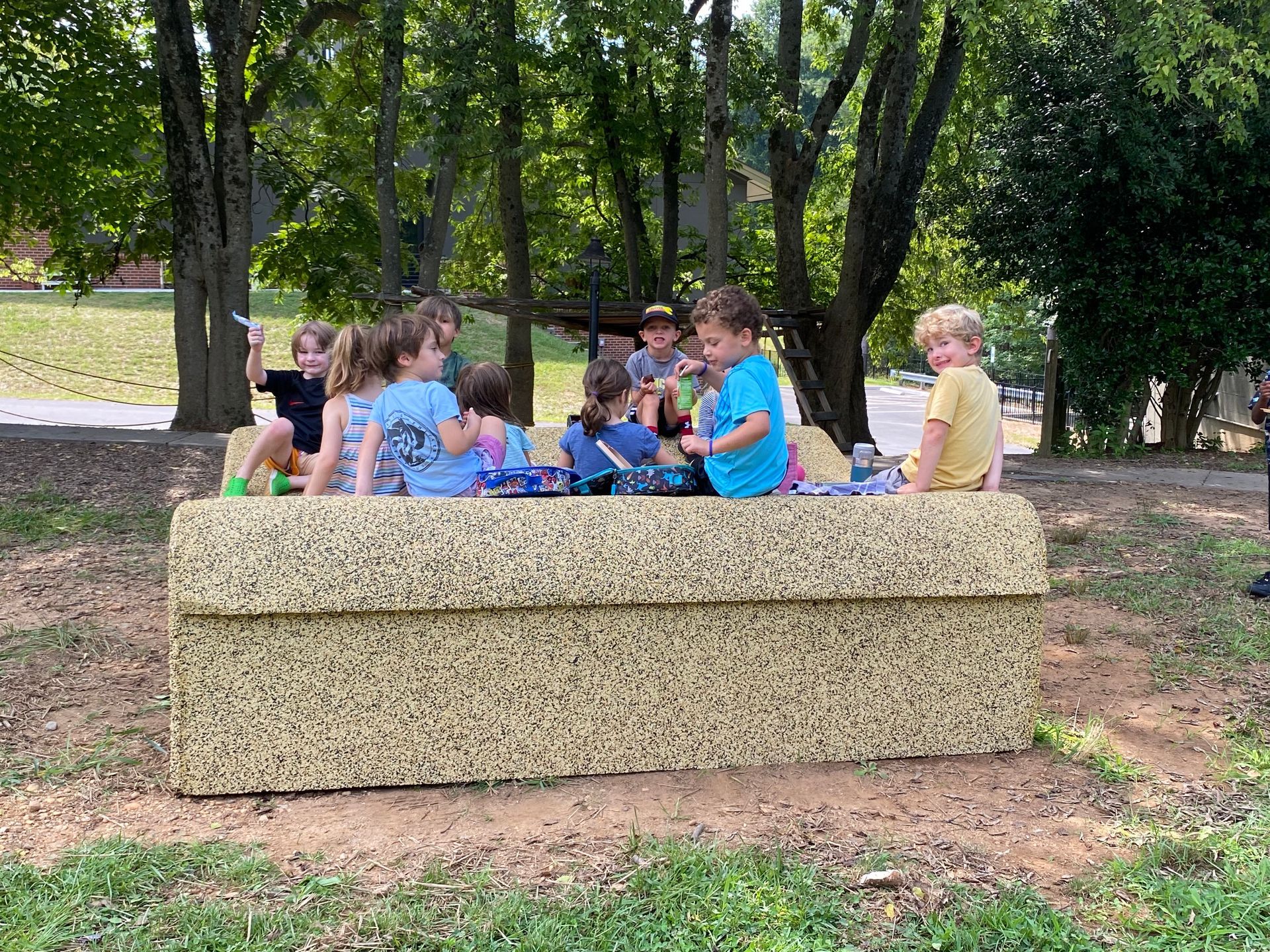Architect and Engineers: Small group work in the Oak Room
I love the phrase there’s no “I” in team!
It’s a pretty accurate description of the way we do things at Sabot. All of our good thinking- both from children and adults- is a team effort. It’s part of our Reggio-Emilia philosophy to share our individual points of view with each other, and to work toward a collaborative conclusion. We refer to this process as co-construction
, a creation of new knowledge together. Possibilities that aren’t readily clear to us as individuals, start to crystallize as we listen to the ideas of our peers, and as they listen to us.
Reggio-Emilia philosophy to share our individual points of view with each other, and to work toward a collaborative conclusion. We refer to this process as co-construction
, a creation of new knowledge together. Possibilities that aren’t readily clear to us as individuals, start to crystallize as we listen to the ideas of our peers, and as they listen to us.
It’s really a paradox if you think much about it: a collaborative effort that depends on the individuals in the group. Perhaps we should change the phrase to “There’s an “I” and an “us” in genius !”
One way in which we as classroom teachers engage in the co-construction process is during our weekly Oak Room pedagogical meetings. During these conversations Shannon and I share observations and documentation (traces of children’s work, audio/video recordings, or teacher notes) with Anna (our atelierista
) and Marty (our pedagogista
). Usually we have a knotty question about something happening in our classroom, or aren’t sure how to deepen an exploration of a developing interest. Anna and Marty don’t tell us what to do, but rather tap into their fresh perspectives and unique expertise, and draw from their rich past experiences to lend their thinking to Shannon’s and my own points of view. Slowly a new way of thinking about our questions emerges during these dialogues.
It was out of one of these team meetings that the idea for a small group evolved. We had observed over time that our block area was used mostly in parallel play. This type of play was in contrast to other experiences in our classrooms where children’s play was more collaboratively oriented. We also wondered about the children who had ideas for the block area, but were always overruled in favor of those individuals with more assertive voices. Anna suggested we invite an individual child to be “in charge” for the morning over what happens in that area. Maybe that child could draw a plan and share it with everyone else to make their ideas visible. With this idea in mind, Shannon and I devised a small group opportunity- coining it Architect and Engineers.
Here’s the system we organized: Each week a team of three students meets for three consecutive days in our block area. One child is selected by the group to be the architect- the person in charge of what gets built that day. The remaining team members are the engineers (or builders- early on we used both terms). The architect maps out a plan on paper and presents it to the group. Before building commences, the onus is on group members to ask the architect questions about their plan.
of what gets built that day. The remaining team members are the engineers (or builders- early on we used both terms). The architect maps out a plan on paper and presents it to the group. Before building commences, the onus is on group members to ask the architect questions about their plan.
A different architect is chosen on each of the subsequent two days. Teams rotate weekly so that everyone in the Oak Room has this small group experience. As of this time, each group has completed one 3-day session. (In fact, each group will have another chance- we have extended this experience using the same groupings of children for a second time).
As with any small group- or indeed any provocation in the classroom- we never quite know what to expect. We may have some theories about how the children will respond, but ultimately every scenario is different. So we document the group in action and reflect afterward about what we notice and wonder.
Many common threads have become clear over time with our reflections. I could write about persistence, flexibility, agency, intersubjectivity, communication, resilience
– every possible buzzword in education comes to mind when thinking about these groups. And these concepts are all there- embedded in our documentation of these groups in action.
in education comes to mind when thinking about these groups. And these concepts are all there- embedded in our documentation of these groups in action.
But the one thread that Shannon and I keep returning to is the orientation toward listening that is consistently evident in every group. Over and over again children are holding their attention to their team mates: the engineers are building the architect’s wishes (and checking with that person for confirmation); and, the architect flexibly accommodates the interests of their team mates in their plans (while still maintaining their leadership position). Even when two children are at odds over who will be the architect on a given day- this decision being the only difficult hurdle any of the groups have encountered so far- the intention to compromise appears to trump individual opinions. Is this a reflection of their regard for each other and the group?
Digging a little deeper, the listening we observe in these groups is not “polite” or “forced” listening, but instead feels like an openness toward each other, a caring about the other’s needs and wants. Perhaps relationship
and community
underpin this small group experience. Perhaps relationship and community underpin everything that happens in the Oak Room. I hope so. That sounds genius.
Perhaps relationship
and community
underpin this small group experience. Perhaps relationship and community underpin everything that happens in the Oak Room. I hope so. That sounds genius.
Stay tuned for follow-up blogs as we follow more threads of this small group experience!
The post Architect and Engineers: Small group work in the Oak Room appeared first on Sabot at Stony Point.
SHARE THIS POST
